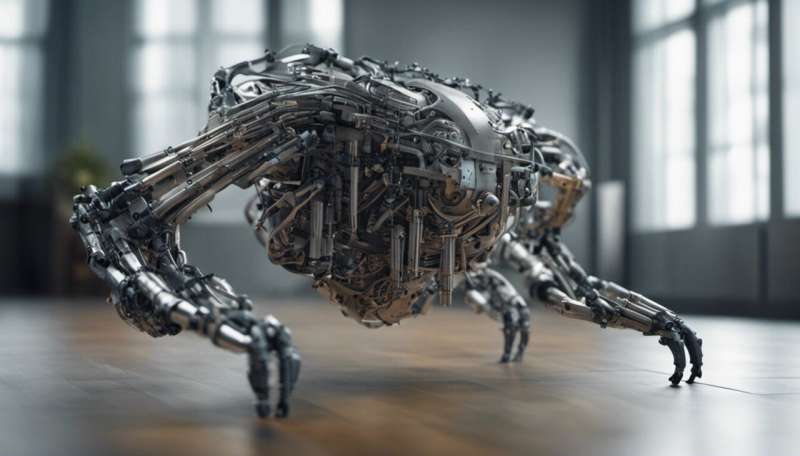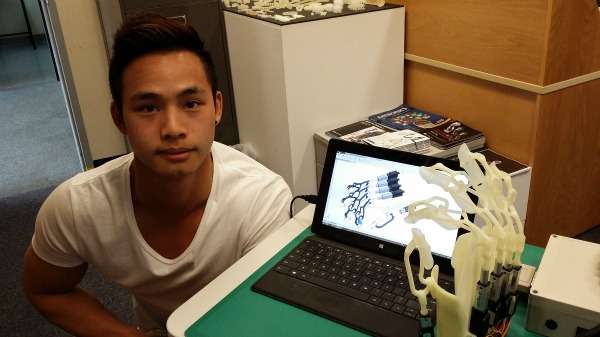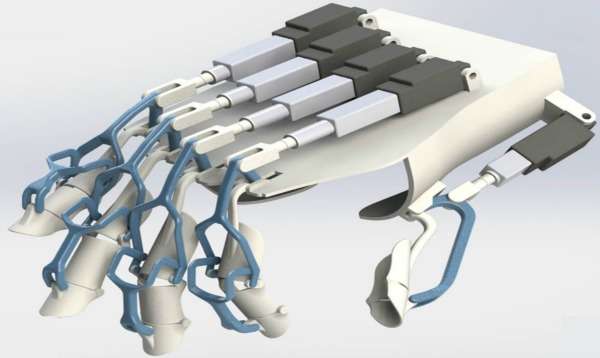Robotic exoskeleton to help heal hand injuries

Curtin University researchers have developed an innovative robotic hand exoskeleton which can be made cheaply using a 3D printer and could potentially cut down on rehabilitation visits for patients.
When people injure a finger, the digit generally has to be immobilised so it can heal.
The patient then has to start gradually moving the injured finger to get it back to normal.
Using relatively inexpensive 3D printing, the Curtin team's exoskeleton can be customised to the patient's hand.
The battery-powered device will eventually gently move the fingers to assist full healing.
The idea for the device came about when Curtin's Department of Mechanical Engineering mechatronics engineer Dr Lei Cui met renowned performance artist Professor Stelarc who has an interest in 3D printing and the human body.
"We wanted to use 3D printing technology to print the articulated linkage of the device in one piece, with no assembly work needed," Dr Cui says.
The hand was developed with the help of mechatronics engineer Anthony Phan, who worked on it as part of his final year mechatronics thesis project.
Other members of the research team include Professor Garry Allison and David Parsons of Curtin's Faculty of Health Sciences.
Dr Cui says the robotic exoskeleton, called the Assisted Finger Orthosis, can be customised to a person's hand using 48 parameters.
Small linear motors, powered by battery, can be programmed to move the finger as part of the rehab process.

Dr Cui says the exoskeleton has the potential to define the future of hand rehabilitation, both in terms of cost and also having fewer rehab visits.
"For instance, the physiotherapist could remotely set the parameters [for finger movement], the range of motions and the frequency," he says.
With each finger of the exoskeleton, there are eight rigid parts and pins that can be made by 3D printing.
"For each individual finger, the total cost is about $100, it's very affordable," Dr Cui says.

"It would have been very expensive if we had to use traditional manufacturing."
The Assisted Finger Orthosis won the $15,000 first prize at the recent Curtin Commercial Innovation awards.
"We would like to apply for funding for ARC or NHMRC to further develop the exoskeleton," Dr Cui says
"In the meantime, we are also looking for some investors to help commercialise it."
Provided by Science Network WA
This article first appeared on ScienceNetwork Western Australia a science news website based at Scitech.




















